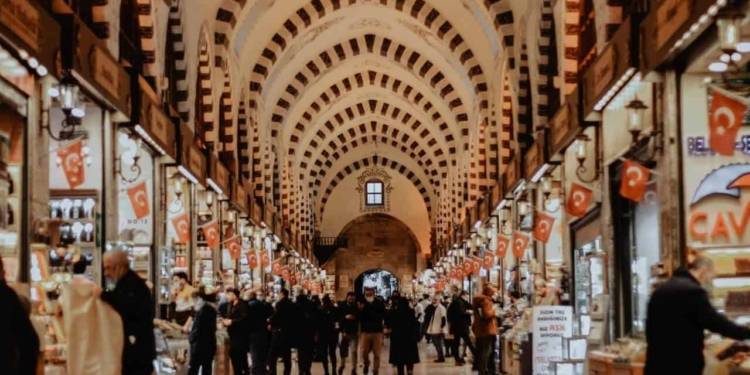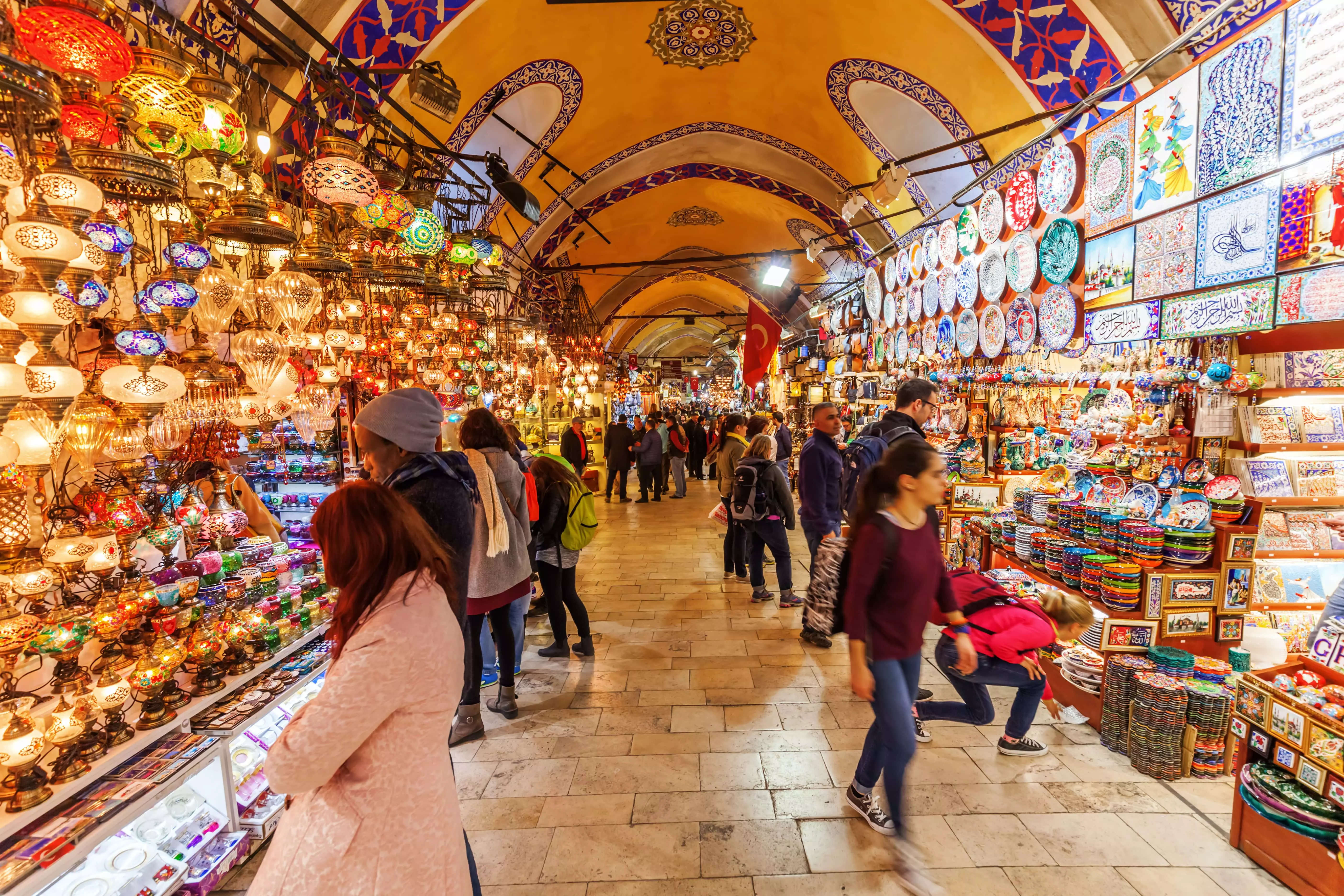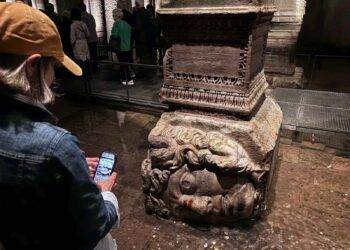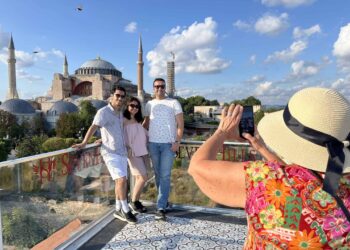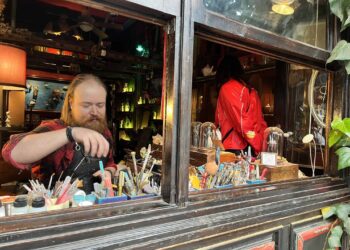Located in the heart of Istanbul‘s old town Sultanahmet, the Grand Bazaar is one of the oldest, largest, and busiest covered markets in the world.
Table of Contents
Introduction to Istanbul's famous Grand Bazaar
With its labyrinthine alleyways, more than 4,000 shops, and countless treasures, it’s no wonder the bazaar attracts millions of visitors each day.
But the Grand Bazaar is more than just a shopper’s paradise. It’s also a cultural landmark with a rich history that dates back to the 15th century, when it was first established as a small market in Constantinople‘s early Ottoman days.
Grand Bazaar in Istanbul sees 40 million visitors in 2022
Over the centuries, the bazaar grew and evolved into the sprawling complex that it is today, encompassing over 60 streets and alleys and covering an area of 30,700 square meters. It has survived numerous fires, earthquakes, and wars, and has undergone many renovations and expansions.
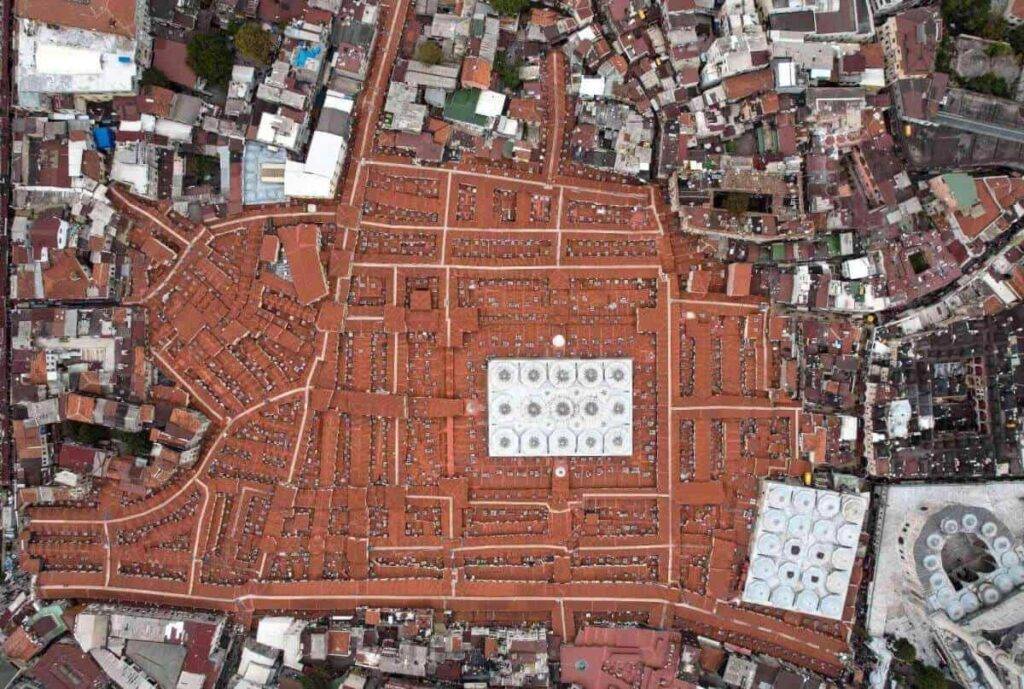
The Architecture of the Grand Bazaar
The Grand Bazaar’s architecture is a unique blend of Ottoman, Byzantine, and Islamic styles. The complex is made up of over 60 streets and alleys, which are covered by domed roofs and decorated with intricate tile work.
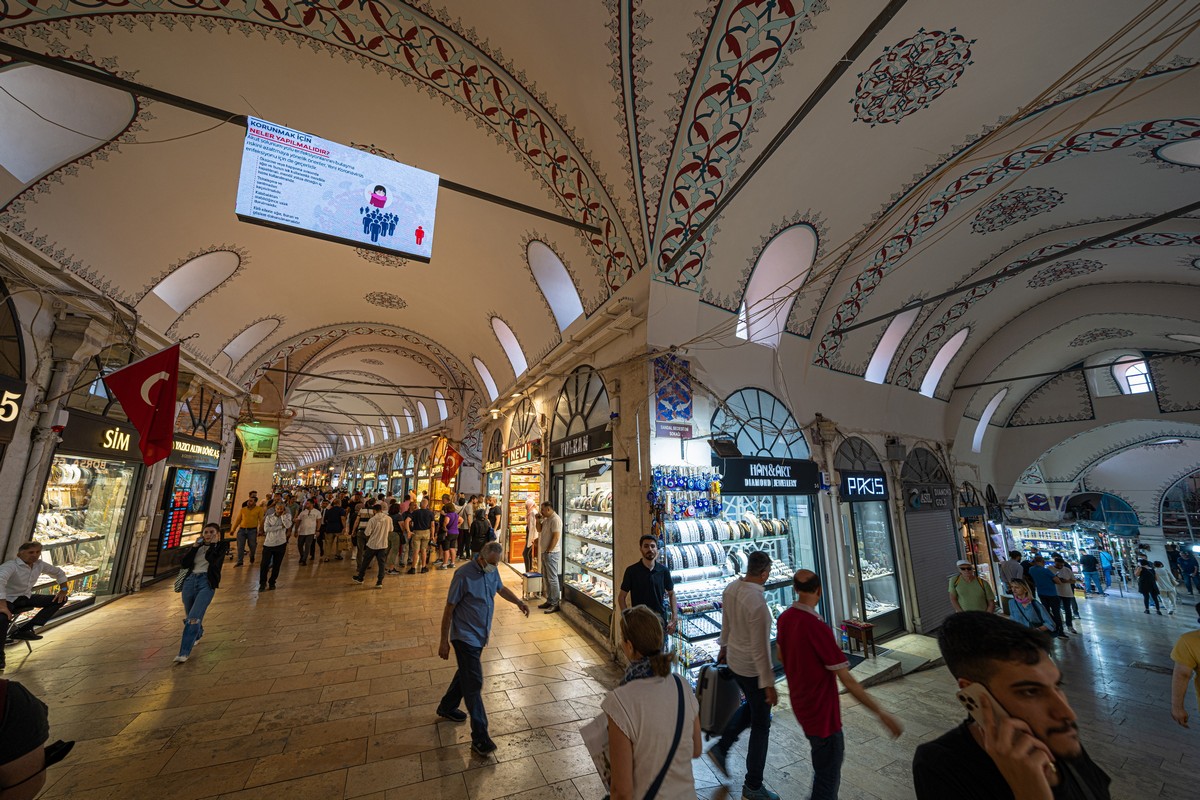
The bazaar’s architecture is characterized by its use of arches, vaults, and domes, which create a sense of grandeur and spaciousness. The domes, in particular, are an important feature of the bazaar‘s design, as they allow natural light to filter into the covered spaces.
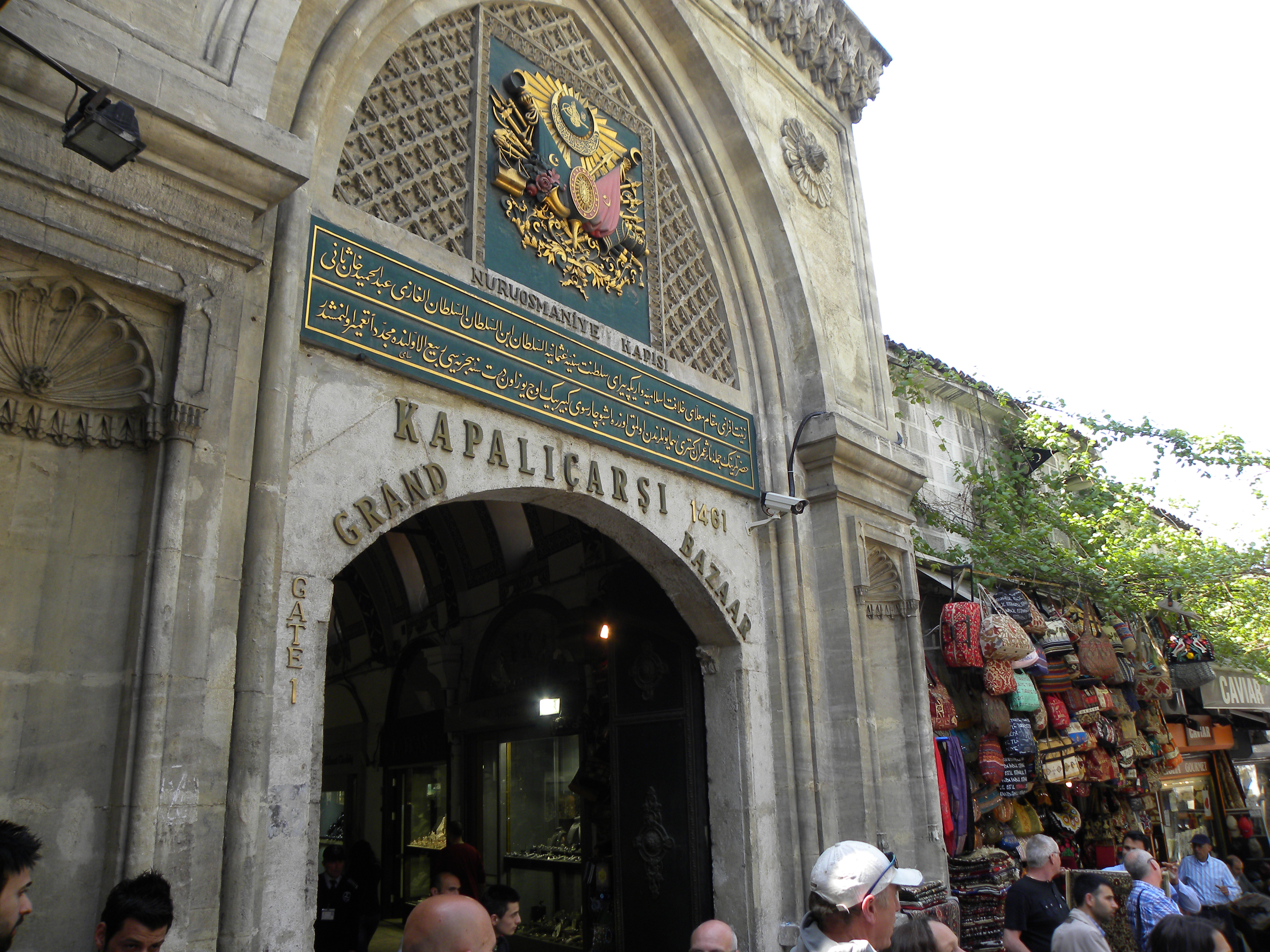
Inside the Grand Bazaar, the shops are arranged in a maze-like pattern, with narrow passageways and hidden courtyards. Many of the shops have beautiful wooden facades and ornate metalwork, which add to the overall aesthetic of the complex.

Another notable feature of the Grand Bazaar’s architecture is the use of fountains and water features. These not only serve a practical purpose in providing water for drinking and washing, but also add to the bazaar’s ambiance and beauty.
Overall, the Grand Bazaar’s architecture is a testament to the rich history and cultural heritage of Istanbul. Its unique blend of styles and its use of natural light and water create a truly memorable shopping experience for visitors from around the world.
Istanbul and the Aegean
Trace Turkey’s grand story in just five well-paced days—wander imperial Istanbul, fly to Pamukkale’s white terraces, explore majestic Ephesus, then return for an optional Bosphorus farewell—privately guided and seamlessly handled by The Other Tour, with time to breathe, taste, and connect—unhurried.
Cultural Significance
The Grand Bazaar in Istanbul holds immense cultural significance for several reasons:
Symbol of Trade and Exchange: For centuries, the Grand Bazaar has been a vibrant center of commerce, attracting merchants and buyers from all over the world. It epitomizes Istanbul’s position as a crossroads between Europe and Asia, where cultures and traditions blended.
Historical Legacy: Established in the 15th century, the Grand Bazaar boasts over 500 years of history. Its architecture, narrow streets, and bustling atmosphere are a testament to its Ottoman origins, offering a glimpse into a bygone era.

Preservation of Craftsmanship: While modern retail has taken hold, the Grand Bazaar remains a bastion of traditional craftsmanship and artistry. It’s a place where skilled artisans still practice their trades, showcasing techniques like carpet weaving, jewelry making, ceramics, and leatherwork, passed down through generations.

Social Hub: More than just a marketplace, the Grand Bazaar is a microcosm of Istanbul itself. It’s a lively social space where people gather to bargain, socialize, and enjoy traditional Turkish tea or coffee. The atmosphere is dynamic and reflects the vibrancy of Turkish culture.
Today, the Grand Bazaar is a thriving hub of commerce and culture, attracting locals and tourists alike. It’s a place where you can find everything from traditional Turkish carpets and ceramics to modern clothing and jewelry.
The bazaar is also a major economic center, generating billions of dollars in revenue each year and providing employment for thousands of people. Many of the shops are family-owned and have been passed down from generation to generation.
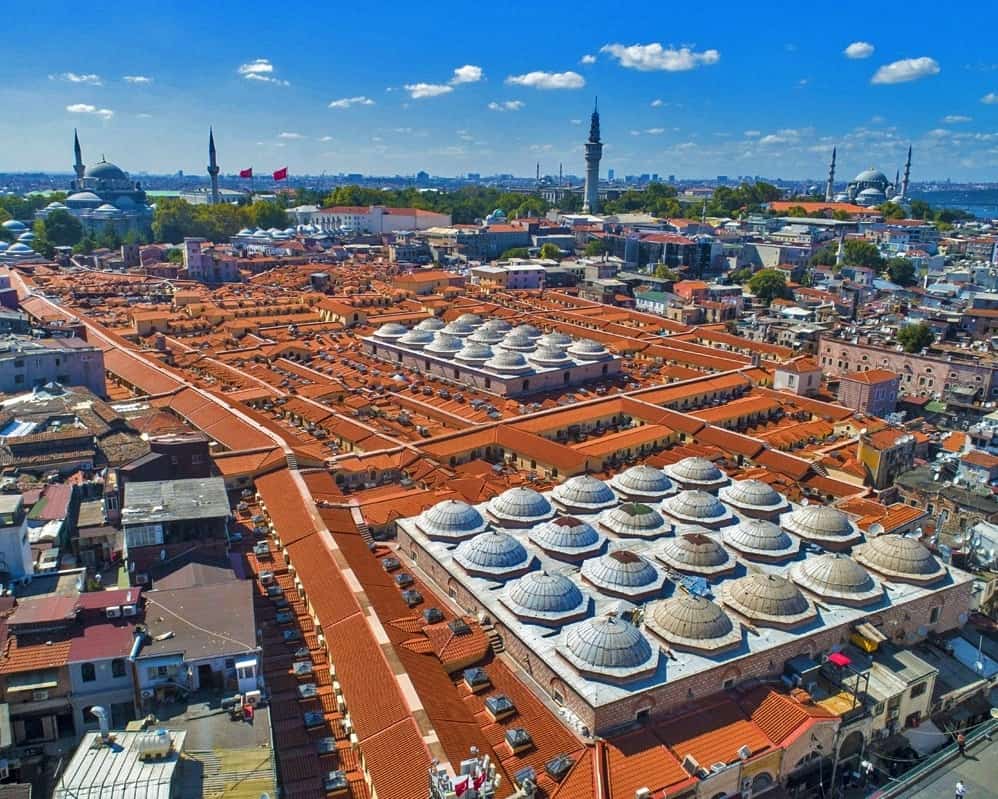
But perhaps most importantly, the Grand Bazaar is a symbol of Istanbul’s rich cultural heritage. It’s a place where the past and present converge, where you can experience the sights, sounds, and smells of Turkey’s vibrant marketplace tradition.
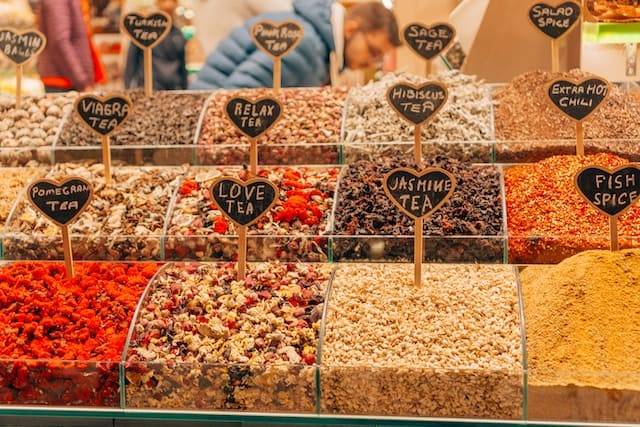
Types of Products
The Grand Bazaar is known for its vast array of products, ranging from Turkish textiles and pottery to gold and silver jewelry. Here are some of the most popular items you can find at the bazaar:
Carpets and kilims
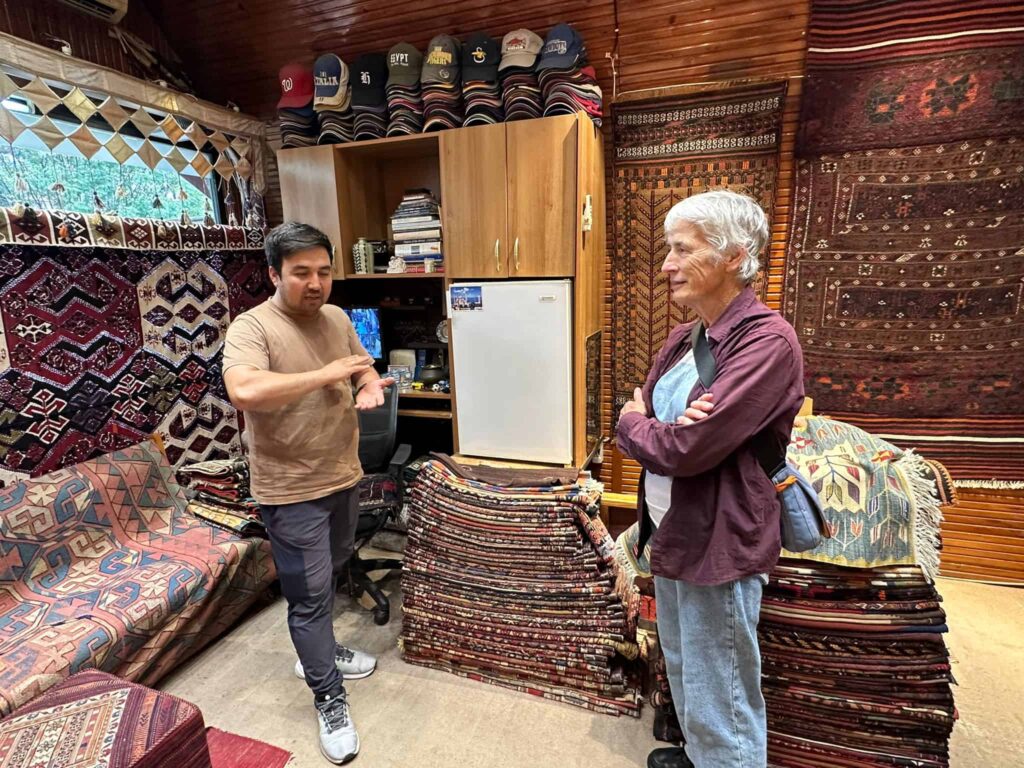
Turkey is famous for its handmade carpets and kilim’s, and the Grand Bazaar is the perfect place to buy them. You’ll find a wide variety of styles, colors, and sizes to choose from, and many shops offer shipping to your home country.
Ceramics and pottery
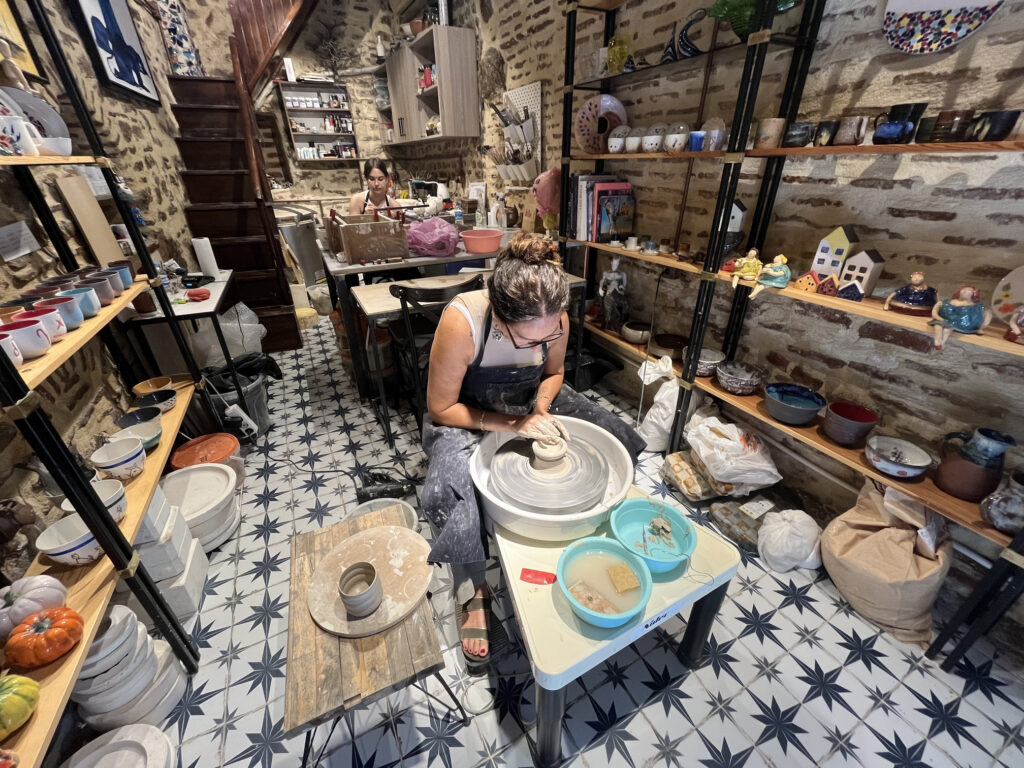
Turkish ceramics and pottery are also highly prized for their beauty and craftsmanship. From traditional blue and white designs to more modern styles, you’re sure to find something that catches your eye.
Jewelry
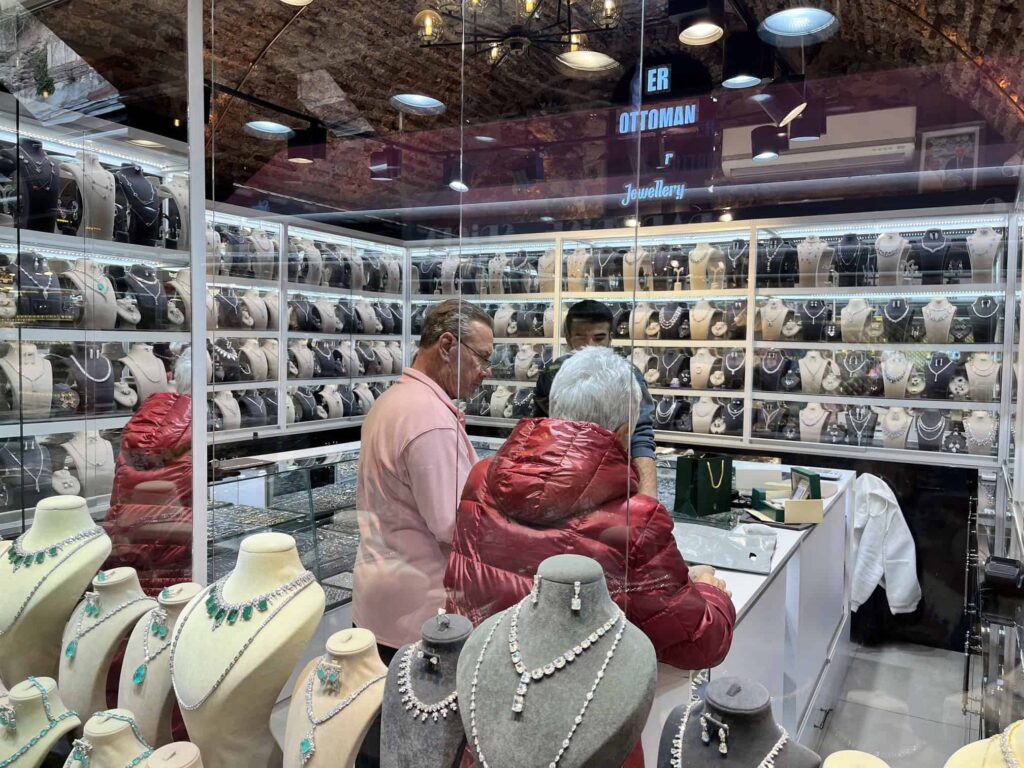
The Grand Bazaar is a treasure trove of gold and silver jewelry, from delicate filigree earrings to bold statement necklaces. Many shops also offer custom designs and repairs.
Leather goods
If you’re looking for high-quality leather goods, the Grand Bazaar has plenty to offer, including handbags, shoes, and jackets.
Spices and Teas
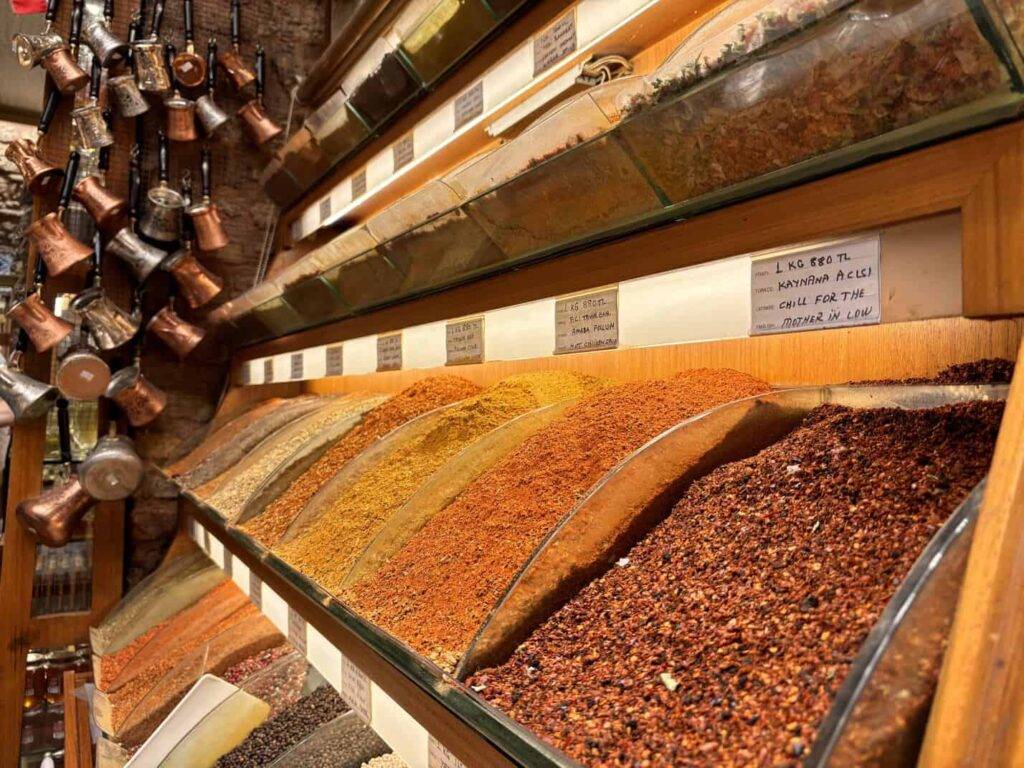
The bazaar is also home to numerous shops selling fragrant spices and teas, many of which are grown locally in Turkey. Or you may find varying quality levels of the Persian saffron.
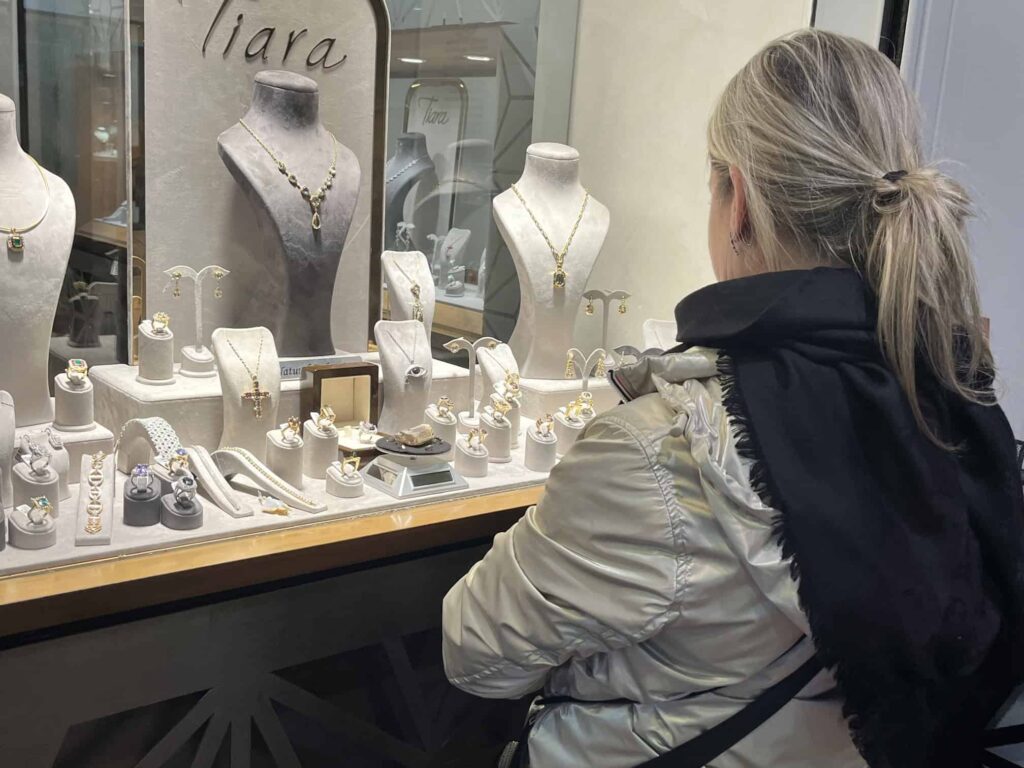
Best Shops
With over 4,000 shops to choose from, it can be overwhelming to know where to start. Here are a few of the best shops in the Grand Bazaar:

Iznik Works
Iznik Works is a shop that sells reproductions of Ottoman and Seljuk ceramics. They also sell quartz pieces and classical vases. People who have reviewed Iznik Works on Tripadvisor say that the customer service is excellent. They mention that the staff is friendly, helpful, and knowledgeable. Travelers recommend this shop to others who are looking for Turkish ceramics.
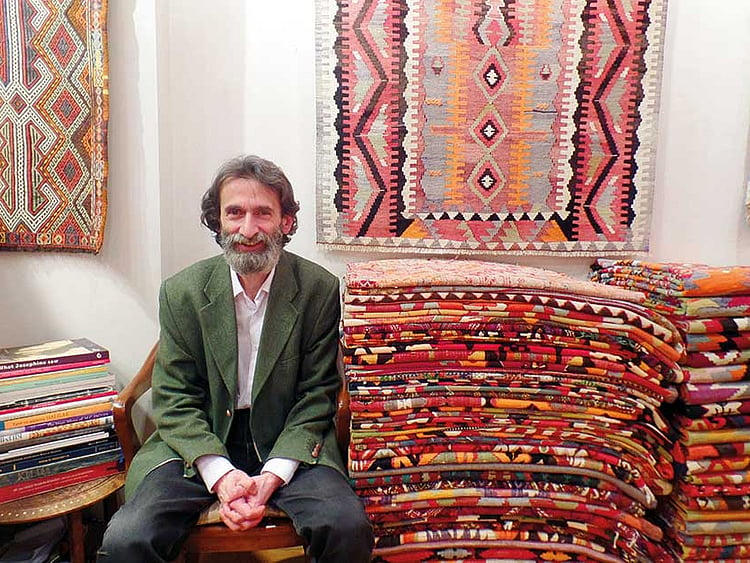
Recep Karaduman Kilim
Recep Karaduman Kilim is a rug store in Istanbul’s Grand Bazaar run by Recep Karaduman, a well-respected expert in Turkish rugs and kilims. The store offers a curated selection of antique and vintage pieces from Turkey and other significant rug-weaving regions. Karaduman’s deep knowledge and his store’s collection make it a destination for those passionate about the artistry and history of handwoven textiles. And they have this special man working in their team.
You can find more information on their website: http://www.recepkaraduman.com/
Hikmet: Master Weaver of Stories and Experiences
Recep Karaduman’s stop isn’t just a place to buy rugs – it’s an immersive journey into the world of textiles and the stories they hold.
Hikmet Şırlak, in particular, is a captivating figure, sharing his knowledge with infectious enthusiasm. Visitors rave about his welcoming nature, making them feel like friends rather than customers. His no-pressure sales style and genuine passion clearly resonate with customers, who often mention the relaxed atmosphere and insightful conversations.

Whether simply seeking knowledge or acquiring a stunning kilim, Hikmet offers an exceptional experience. His understanding of the history and artistry of rugs is profound, as evidenced by his TEDx talk and the delightful book he shares with customers. The book is called “Kilim is Body Language”.
The short work claims that kilims are more than just decorative textiles; they are visual representations of memories, emotions, and cultural narratives. The patterns and colors within kilims evolve into simplified symbols that evoke deeper feelings and connect to both the weaver’s personal experiences and the collective history of their community.

Read the full article here: biourbanism.org/kilim-body-language
If you’re searching for a truly memorable encounter amidst the Grand Bazaar’s bustle, Hikmet’s Kilim Shop is a must-visit.

Abdulla
Step into Abdulla in the heart of Istanbul’s Grand Bazaar and be transported to a world of traditional Turkish bath rituals. Immerse yourself in the mystical scents of handcrafted soaps, feel the softness of luxurious handwoven linens, and discover the invigorating power of natural bath products. Abdulla offers a timeless experience of cleansing and rejuvenation.
Dhoku
Discover the vibrant world of Dhoku, where traditional kilim weaving meets contemporary design. Nestled within Istanbul’s iconic Grand Bazaar, Dhoku offers a unique blend of history and modern artistry. Step inside and find the perfect kilim to transform your space.
Sevan Bıçakçı
Step into the whimsical world of Sevan Bıçakçı and discover jewelry that blurs the lines between reality and fantasy. Inspired by Istanbul’s rich history, each piece is a masterpiece of intricate craftsmanship, adorned with precious gems and unexpected details. Sevan Bıçakçı’s jewelry is wearable art, designed to ignite your imagination.
Website: sevanbicakci.com
Other Good Shops
Grand Bazaar is a popular tourist destination, and that it is still a favorite among Istanbul residents. Here are some of the shops mentioned in the article:
- Ethnicon sell contemporary kilims
- Eski sells antiques from the 19th and 20th centuries
- Iznik Art sells traditional ceramic art
- Nick’s Calligraphy Center sells calligraphy supplies and gifts
- Özlem Tuna sells contemporary homeware and jewelry
- Sivaslı İstanbul Yazmacısı sells colorful, handmade fabrics
- Sofa Art & Antiques sells a variety of antiques
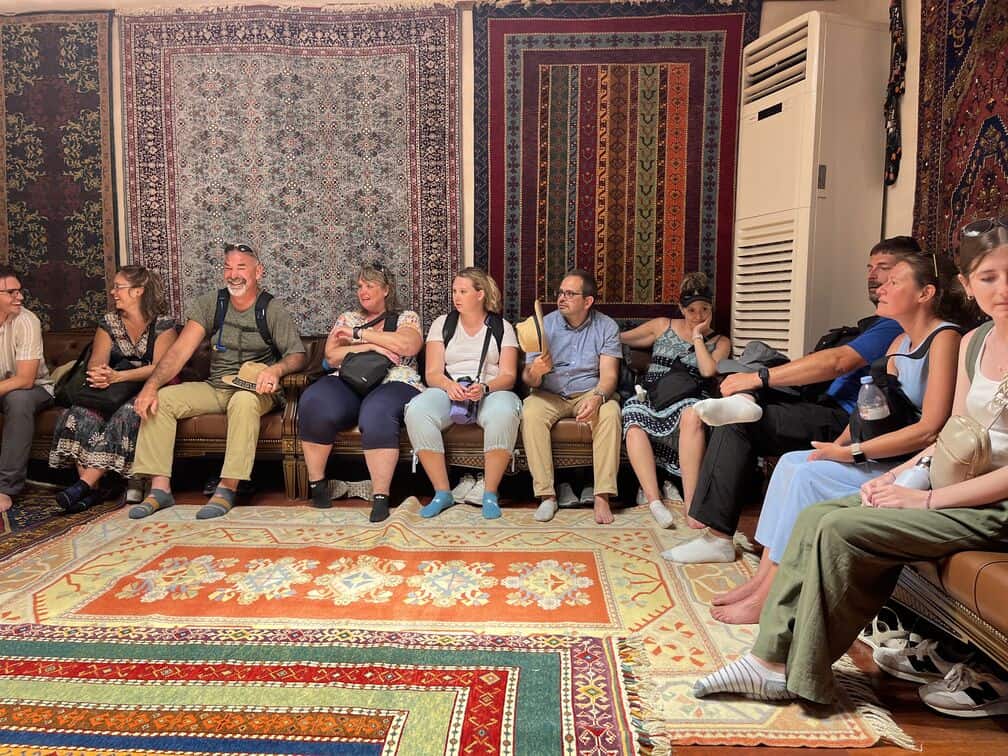
Just Outside the Grand Bazaar: Nakkas Rug
Located just a short walk from Istanbul‘s Grand Bazaar, Nakkas Rug offers an exceptional collection of authentic handmade Turkish rugs and textiles. Beyond its impressive inventory, Nakkas is renowned for housing a 6th-century Byzantine cistern beneath its premises, adding a unique historical dimension to your shopping experience. This blend of cultural heritage and artisanal craftsmanship makes Nakkas a must-visit destination for those seeking quality and authenticity.
Conclusion
The Grand Bazaar in Istanbul is a must-visit destination for anyone who loves shopping, history, and culture. With its centuries-old architecture, intricate design, and countless shops, the Grand Bazaar is a unique place that offers an unforgettable experience for visitors.
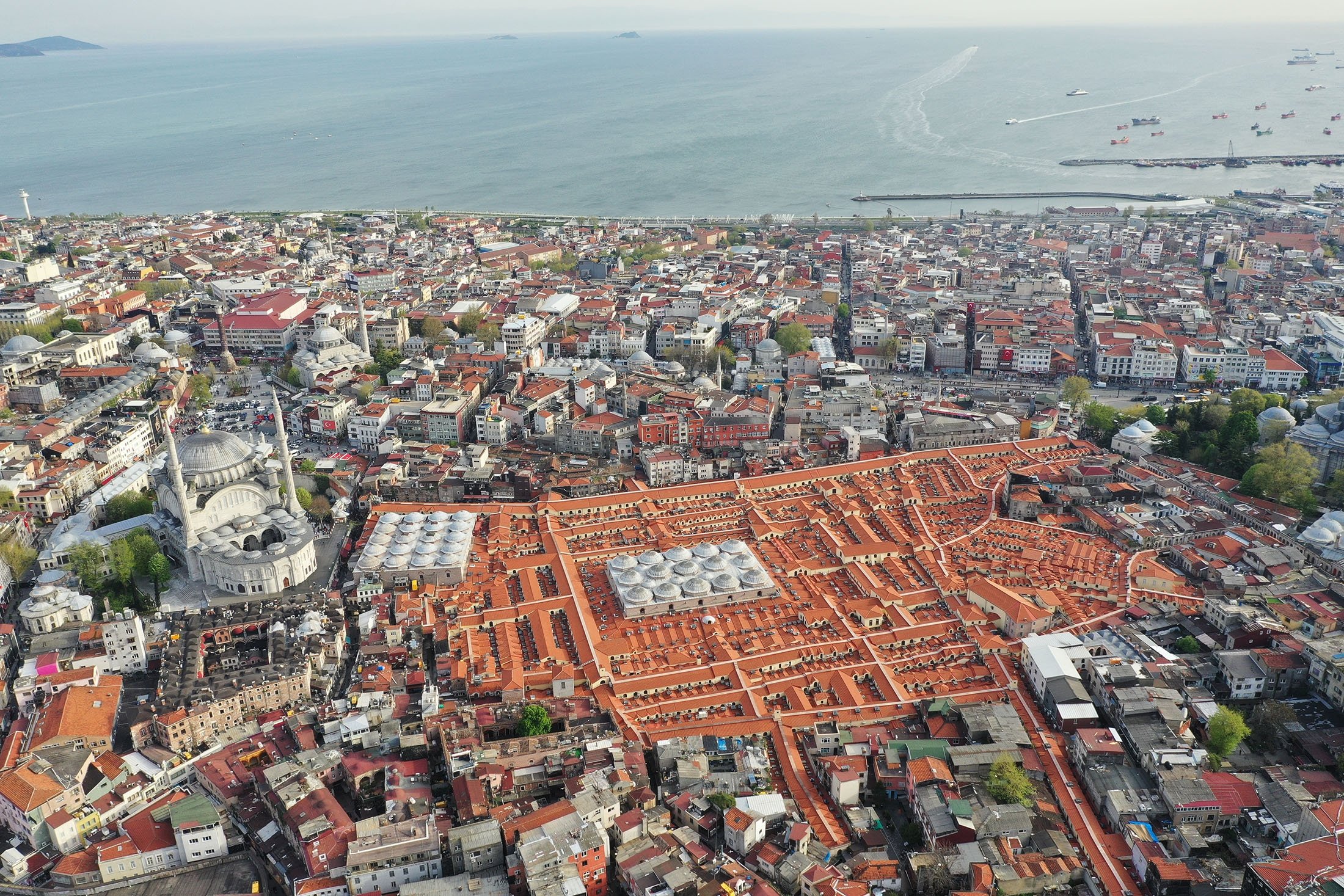
Whether you are looking for spices, jewelry, carpets, or souvenirs, you can find it all at the Grand Bazaar. So, make sure to include the Grand Bazaar in your travel itinerary when you visit Istanbul, and immerse yourself in the vibrant and diverse atmosphere of this iconic marketplace.
Book a guide for assisted shopping
You may book a private tour that only focuses on Grand Bazaar and shopping, with a local expert that would help you get incredible discounts.
Please get in touch if you are interested in our assistance.
